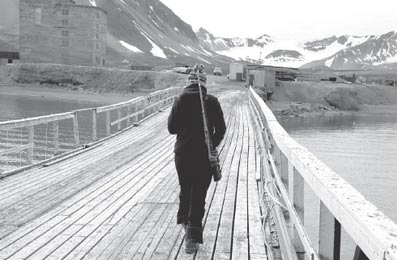 |
|
German station leader Kathrin Lang carries a rifle as she walks at the port of the scientific base of Ny-Alesund in the Svalbard archipelago. [Photo/Agencies] |
Residents of the remote Arctic settlement of Ny-Alesund never lock their homes-happy to sacrifice privacy for the option of barging through the nearest door if a polar bear attacks.
The research center, formerly a coal-mining town, is perched on the Norwegian island of Spitsbergen, which is also home to a sizable polar bear community in one of the most extreme landscapes on Earth.
The northernmost permanent human settlement, Ny-Alesund hosts about 150 scientists, researchers and technicians during the Arctic summer, dwindling to a handful of caretakers in the colder months.
New arrivals are swiftly initiated into the dos and don'ts of life in close quarters with a formidable predator.
"If you see a bear, just enter any building and call the caretaker. His number is marked on every telephone," Katherin Lang, head of the Franco-German Awipev institute-one of several research bases-tells newcomers.
Two days earlier, two female bears and their two cubs were spotted just four kilometers from the base, feeding on a stranded walrus.
"It is forbidden to go in that direction, even if you have a gun," said Lang-a warning that is echoed in notices put up in the cafeteria.
|
|
|
|
|
|
|
|
